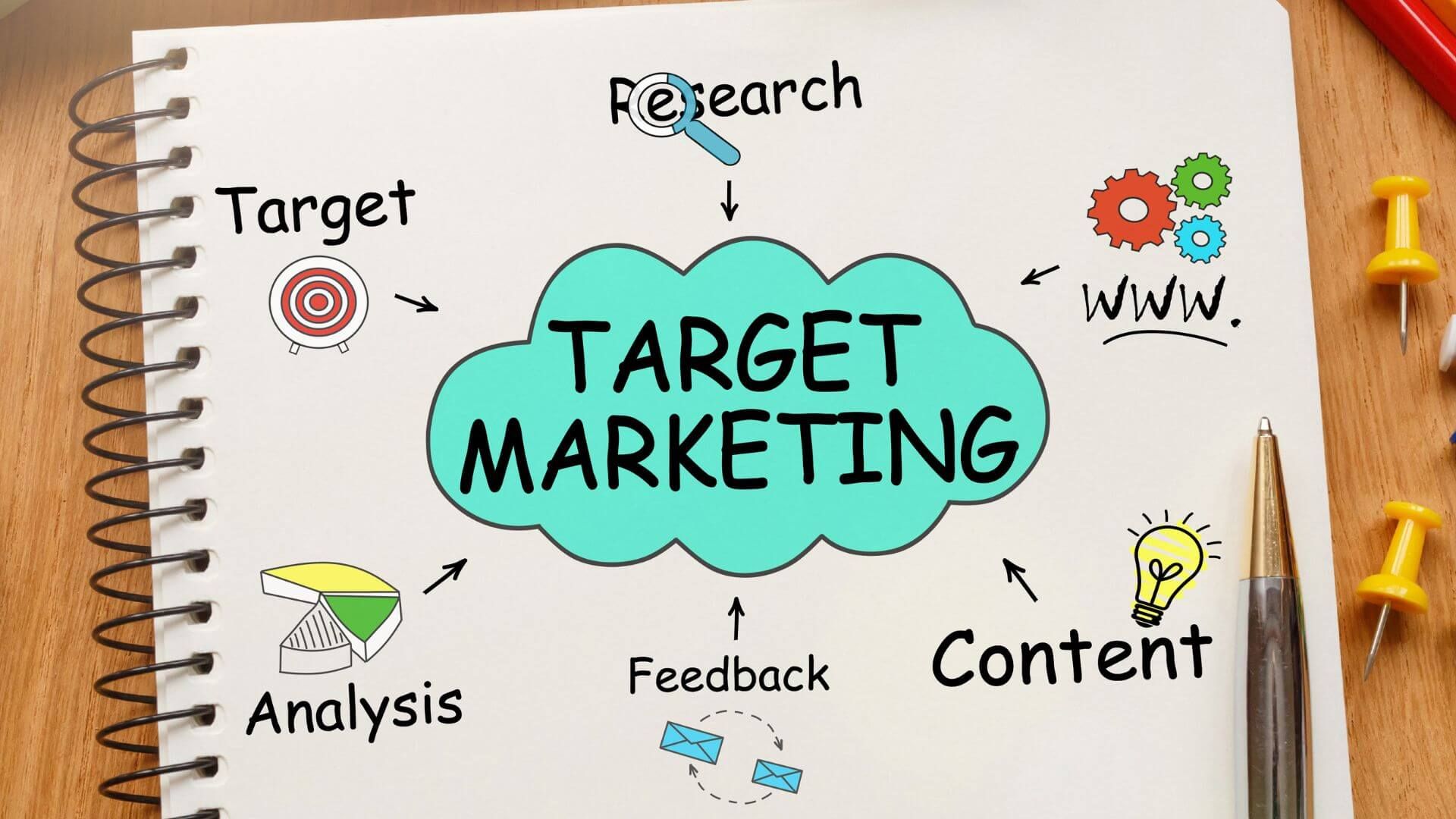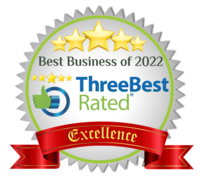Content is King Creating High Quality Content That Converts
In digital marketing, "Content is King" has never been more relevant. High-quality content drives brand awareness, engagement, and conversions. This blog explores how to create compelling content that resonates with your audience and inspires action. Discover strategies, tips, and best practices—from crafting attention-grabbing headlines to delivering engaging narratives—to boost your online presence and achieve meaningful results.
Understanding the Role of Content Marketing in Driving Conversions

Content marketing is a powerful tool for driving conversions and achieving business goals. By strategically creating and sharing valuable content, businesses can engage their audience, build brand awareness, and turn prospects into loyal customers. Here are key aspects to consider when crafting an effective content marketing strategy:
Defining Your Target Audience
- Identifying your target audience is essential for creating content that resonates with their needs and interests. Conduct market research and develop buyer personas to gain insights into their demographics, preferences, and pain points.
- Tailor your content to address the specific challenges and aspirations of your target audience, positioning yourself as a trusted resource and industry leader.
Developing a Content Strategy
- A well-defined content strategy serves as a roadmap for your content marketing efforts. Set clear goals, define key performance indicators (KPIs), and establish a content calendar to guide your content creation and distribution.
- Leverage various formats, such as blog posts, videos, infographics, and social media posts, to cater to different preferences and engage your audience across multiple channels.
Optimizing for Search Engines and Social Media
- Incorporate relevant keywords and SEO best practices to ensure your content ranks well in search engine results, increasing its discoverability.
- Tailor your content for different social media platforms to maximize engagement. Each platform has its own unique features and audience behavior, so adapt your content accordingly.
Creating Valuable and Engaging Content
- Provide valuable insights, practical tips, and industry news to position your brand as an authoritative source of information.
- Encourage user-generated content and foster conversations with your audience to build brand loyalty and create a sense of community.
Measuring and Analyzing Results
- Regularly analyze the performance of your content marketing initiatives using analytics tools and marketing reports. Monitor metrics such as website traffic, engagement rates, conversions, and social media metrics to assess the effectiveness of your content.
- Use the insights gained to refine your content strategy, make data-driven decisions, and optimize your overall marketing strategy.
By implementing a comprehensive content marketing strategy, businesses can effectively generate leads, improve brand awareness, and drive conversions. Embrace the power of valuable and engaging content across various formats and channels to connect with your target audience, establish thought leadership, and achieve meaningful results.
How to Identify and Cater to Your Target Audience

To effectively reach and engage your target audience, it is essential to understand their needs, preferences, and behaviors. Here are some key strategies to help you identify and cater to your target audience:
1. Define Your Target Audience Clearly
- Begin by clearly defining your target audience based on demographics, psychographics, and other relevant factors.
- Consider factors such as age, gender, location, interests, behaviors, and purchasing power.
2. Conduct Market Research and Analysis
- Conduct thorough market research to gain insights into your target audience's preferences, pain points, and motivations.
- Utilize tools like customer surveys, interviews, and social media listening to gather valuable data and feedback.
3. Create Buyer Personas
- Develop detailed buyer personas that represent your ideal customers. These personas should include information such as demographics, interests, goals, challenges, and preferred communication channels.
- Use these personas as a reference point when crafting your content and marketing messages.
4. Tailor Your Content to Your Audience's Preferences
- Personalize your content marketing strategy to cater to your target audience's preferences.
- Create content in various formats such as blog posts, videos, podcasts, and infographics to appeal to different audience segments.
- Utilize social media marketing and SEO techniques to ensure your content reaches the right audience.
5. Engage and Interact with Your Audience
- Foster meaningful conversations and engagement with your target audience to build brand loyalty and create a sense of community.
- Encourage user-generated content, respond to comments and messages, and actively participate in relevant industry discussions.
6. Continuously Monitor and Analyze Results
- Regularly measure and analyze the performance of your content marketing initiatives using analytics tools and marketing reports.
- Monitor metrics such as website traffic, engagement rates, conversions, and social media metrics to assess the effectiveness of your content.
- Use the insights gained to refine your content strategy, make data-driven decisions, and optimize your overall marketing strategy.
By employing these strategies, you can effectively identify your target audience, tailor your content to their preferences, and build lasting connections with your customers. A well-executed content marketing strategy, guided by a deep understanding of your target audience, can drive engagement, boost brand awareness, and ultimately lead to conversions and business growth.
The Importance of a Well-Defined Content Marketing Strategy

A well-defined content marketing strategy is essential for businesses to effectively engage their target audience, build brand authority, and drive meaningful results. By delivering valuable and relevant content, businesses can encourage their audience to take desired actions, ultimately fueling growth. Let's explore the key aspects and benefits of a strong content marketing strategy:
1. Targeting the Right Audience
A clearly defined audience is the foundation of a successful content marketing strategy. By understanding your target audience's demographics, interests, pain points, and behaviors, you can create content that resonates with them and addresses their specific needs. This targeted approach ensures that your content reaches the right people, increasing the chances of generating meaningful engagement and conversions.
2. Creating Engaging Content
A well-defined content marketing strategy guides the creation of high-quality, engaging content across various channels. It enables you to tailor your content to different formats and platforms, such as blog posts, social media posts, videos, and more. By catering to the preferences of your audience and utilizing the strengths of each platform, you can maximize the impact of your content and effectively engage your target audience.
3. Building Brand Authority
Consistently delivering valuable and insightful content establishes your brand as a thought leader and authority in your industry. By sharing industry trends, providing expert advice, and addressing common challenges, you position your business as a trusted resource. This builds credibility and fosters trust with your audience, increasing the likelihood of them turning to your brand when making purchasing decisions.
4. Driving Traffic and Conversions
A well-executed content marketing strategy drives targeted traffic to your website, social media platforms, and other online channels. By optimizing your content for search engines, utilizing paid ads, and leveraging social media promotion, you can attract potential customers and guide them through the buyer's journey. Engaging and persuasive content encourages conversions, whether it's making a purchase, signing up for a newsletter, or requesting more information.
5. Aligning with Business Goals
A well-defined content marketing strategy aligns with your overall marketing and business goals. It ensures that your content efforts are focused on driving results that directly contribute to your business growth. By regularly tracking and analyzing content marketing statistics and metrics, you can measure the effectiveness of your strategy, identify areas for improvement, and make data-driven decisions to optimize your marketing work.
A well-defined content marketing strategy is a powerful tool that enables businesses to connect with their audience, establish authority, and drive tangible business outcomes. By understanding your target audience, creating engaging content, and aligning your strategy with business goals, you can position your brand for success in the ever-evolving digital landscape. Embrace the potential of content marketing, stay ahead of industry trends, and unleash the full potential of your marketing efforts.
Crafting Headlines That Capture Attention and Inspire Clicks

Crafting compelling headlines is a crucial aspect of content marketing that can make or break the success of your content. A well-crafted headline has the power to capture attention, entice readers, and inspire them to click through to your content. Here are some key strategies and best practices to consider when crafting headlines:
1. Understand Your Target Audience
To create headlines that resonate with your audience, it's essential to have a deep understanding of their needs, interests, and pain points. Conduct thorough research and analysis to gain insights into your target audience's preferences and motivations. This understanding will enable you to craft headlines that directly address their needs and capture their attention.
2. Use Keywords Strategically
Incorporating relevant keywords into your headlines can boost your content's visibility and search engine rankings. Conduct keyword research to identify commonly used terms and phrases within your industry or niche. By strategically incorporating these keywords into your headlines, you can increase the chances of your content being discovered by your target audience.
3. Be Clear and Concise
Headlines should be clear, concise, and easy to understand. Avoid using jargon or overly complex language that might confuse or alienate your audience. Instead, aim for clarity and simplicity, ensuring that your headline communicates the value and benefit that readers can expect from your content.
4. Create a Sense of Urgency or Excitement
To capture attention and inspire action, consider incorporating a sense of urgency or excitement into your headlines. Use words and phrases that convey a time-sensitive offer, exclusive information, or a unique opportunity. By creating a sense of urgency or excitement, you can motivate readers to click through and engage with your content.
5. Test and Iterate
Crafting effective headlines is an ongoing process of testing and iteration. Experiment with different headline styles, formats, and lengths to see what resonates best with your audience. Monitor metrics such as click-through rates, engagement, and conversions to evaluate the performance of your headlines and make data-driven decisions to optimize future content.
Remember, headlines are the gateway to your content and play a vital role in attracting potential customers, driving traffic, and establishing your brand reputation. By applying these strategies and best practices, you can create headlines that capture attention, inspire clicks, and drive the success of your content marketing efforts.
Creating Engaging Narratives That Resonate with Your Audience

Crafting narratives that captivate and resonate with your audience is an essential aspect of successful content marketing. By connecting with your readers on a deeper level, you can establish trust, foster engagement, and drive meaningful interactions. Here are some strategies to create compelling narratives that leave a lasting impact:
1. Understand Your Audience
To create narratives that resonate, it's crucial to have a deep understanding of your target audience. Conduct thorough research to identify their needs, preferences, pain points, and aspirations. Tailor your narratives to address their specific interests and challenges, making them feel understood and valued.
2. Tell Authentic Stories
Authenticity is key in capturing your audience's attention and building lasting connections. Share real-life stories, case studies, or testimonials that showcase how your brand or product has made a positive impact. By highlighting genuine experiences, you can create relatable narratives that resonate with your audience's emotions and experiences.
3. Embrace Video Content
Video content continues to gain popularity in the realm of content marketing. Incorporate videos into your narratives to convey powerful messages and engage your audience visually. Whether it's product demos, behind-the-scenes footage, or storytelling videos, leveraging video content can enhance the impact of your narratives and foster a deeper connection with your audience.
4. Utilize Different Content Formats
Diversify your narrative approach by exploring various content formats such as blog posts, podcasts, infographics, or interactive content. Different formats cater to different audience preferences and provide unique ways to convey your brand's story. Experiment with different formats to find what resonates best with your target audience.
5. Amplify with Paid Ads
While organic reach is valuable, consider using paid ads to amplify your narratives and reach a wider audience. Target your ads strategically to ensure they reach potential customers who align with your target audience. Paid ads can help increase brand visibility, drive traffic, and expand the reach of your narratives.
6. Continuously Evolve Your Narrative
As the content marketing landscape evolves, it's essential to stay agile and adapt your narratives to meet changing trends and audience expectations. Monitor industry insights, analyze data, and actively seek feedback from your audience to refine and enhance your narratives over time.
By implementing these strategies, content marketers can create engaging narratives that resonate with their audience, drive meaningful connections, and ultimately achieve their content marketing objectives.
Using Data-Driven Insights to Shape Content Creation Efforts

Data-driven insights play a vital role in shaping effective content-creation efforts. By leveraging data, content marketers can gain valuable insights into their target audience, industry trends, and content performance, enabling them to create high-quality, engaging content that resonates with their audience and drives successful content marketing strategies. Here are some key considerations and strategies for using data-driven insights in content creation:
1. Understanding Your Target Audience
To create content that truly connects with your audience, it's essential to gain a deep understanding of their preferences, interests, and behavior. Utilize data from social media platforms, customer surveys, and analytics tools to identify key demographic and psychographic insights, such as age, location, interests, and purchase behavior. This information will help you craft content that aligns with their needs and interests.
2. Analyzing Content Performance
Regularly analyze the performance of your content to understand what resonates best with your audience. Use metrics such as engagement rates, click-through rates, and conversions to identify which types of content perform well and which ones need improvement. Content marketing tools and platforms like Content Marketing Institute and social media marketing analytics can provide valuable data to assess the effectiveness of your content efforts.
3. Adapting to Emerging Trends
Keep a close eye on industry trends and stay ahead of the curve. Monitor changes in consumer behavior, technology advancements, and emerging content formats. This will help you adapt your content strategy to meet the evolving needs and expectations of your target audience.
4. Aligning with Marketing Objectives
Data-driven insights can help you align your content creation efforts with your overall marketing strategy and key performance indicators (KPIs). By understanding the impact of your content on metrics such as lead generation, brand awareness, and customer retention, you can optimize your content to support your marketing goals.
5. Embracing Different Content Formats
Diversify your content formats to cater to different audience preferences. Experiment with video content, blog posts, podcasts, and other forms of online content marketing to engage your audience through various channels. Pay attention to the consumption habits of your target audience and adapt your content accordingly.
6. Staying Agile and Iterative
Successful content marketing requires continuous learning and adaptation. Stay open to feedback, monitor industry trends, and be willing to refine your content narratives over time. A documented strategy and regular evaluation of your content's performance will enable you to make data-driven decisions and continually improve your content marketing efforts.
By leveraging data-driven insights, content marketers can create compelling and engaging content that drives meaningful audience connections, supports marketing objectives, and ultimately contributes to business success.
Developing High-Quality Social Media Posts That Drive Engagement

High-quality social media posts are essential for capturing audience attention, fostering engagement, and building meaningful connections. With the right strategies and skills, you can boost the impact of your content. Here are some key aspects to consider:
1. Understanding Your Audience and Their Preferences
To create engaging social media content, it is essential to have a deep understanding of your target audience. Conduct thorough research to identify their preferences, interests, and pain points. By understanding what resonates with your audience, you can tailor your content to meet their needs and deliver value.
2. Incorporating Compelling Content Formats
Diversify your content formats to cater to different audience preferences. Experiment with video content, blog posts, podcasts, and other forms of online content marketing to engage your audience through various channels. Pay attention to the consumption habits of your target audience and adapt your content accordingly.
3. Leveraging Customer Testimonials and Industry Experts
Featuring customer testimonials and collaborating with industry experts can add credibility and authenticity to your social media posts. Positive testimonials can build trust and encourage engagement, while insights from industry experts can position your brand as a valuable resource and thought leader.
4. Staying Updated with Google Trends and Industry Insights
Regularly monitoring Google Trends and keeping up with industry insights can help you stay ahead of the curve and create timely and relevant social media content. By incorporating trending topics and aligning your content with industry developments, you can capture the attention of your audience and drive engagement.
5. Optimizing for Organic Search and Paid Ad Space
Implementing effective search engine optimization (SEO) strategies can help your social media posts rank higher in organic search results, increasing their visibility and reach. Additionally, consider utilizing paid ad space on social media platforms to extend your content's reach and target specific audience segments.
6. Collaborating with Third-Party Publications and Influencers
Partnering with reputable third-party publications and influencers in your industry can expand your reach and expose your content to new audiences. By leveraging their networks and credibility, you can amplify the impact of your social media posts and attract new customers.
Developing high-quality social media posts that drive engagement requires a deep understanding of your audience, strategic content formats, valuable industry insights, and optimization techniques. By incorporating these elements into your social media strategy, you can establish your brand as a trusted resource, foster engagement, and attract new customers.
Choosing the Right Social Media Platforms for Your Content Strategy

When it comes to executing an effective content strategy, choosing the right social media platforms is essential for reaching and engaging your target audience. Each platform has its strengths and characteristics that align with different types of content and audience preferences. Here are some key considerations to guide your decision-making process:
1. Understanding Your Target Audience
To make informed choices, start by deeply understanding your target audience. Consider their demographics, interests, and behaviors. This knowledge will help you identify the social media platforms where your prospective customers are most active and receptive to your content.
2. Matching Content Formats
Different social media platforms prioritize and excel in specific content formats. For example, video content thrives on platforms like YouTube and TikTok, while platforms like LinkedIn and Medium are more conducive to blog posts and longer-form written content. Aligning your content formats with the platform's capabilities maximizes engagement and resonates with your audience.
3. Leveraging the Power of Visuals
Visual content is a powerful tool for content marketers. Platforms like Instagram, Pinterest, and Snapchat heavily emphasize visual elements and are ideal for showcasing products, lifestyle images, and visually appealing content. Consider if your marketing work heavily relies on visuals and select platforms that amplify your visual storytelling.
4. Mapping the Customer Journey
Consider the customer journey and where your target audience is in the marketing funnel. Platforms like Facebook and Twitter are effective for generating brand awareness and reaching a broad audience. LinkedIn is valuable for B2B marketing and targeting professionals, while Instagram and Pinterest are great for inspiring and engaging audiences. Tailor your content strategy to align with each platform's role in the customer journey.
5. Leveraging Inbound Marketing
Inbound marketing is centered around providing valuable information and resources to attract and engage prospective customers. Platforms like Facebook, Twitter, and LinkedIn allow you to share blog articles, industry insights, and helpful resources, positioning your brand as a thought leader and attracting potential customers.
Remember, choosing the right social media platforms is not about being present on every platform but about strategically selecting the ones that align with your content marketing goals and target audience. By focusing your efforts on the platforms that resonate with your audience and content formats, you can effectively engage, nurture, and convert your audience into paying customers.
Integrating Visuals and Multimedia for Maximum Content Impact

Incorporating visuals and multimedia elements into your content strategy is essential for capturing the attention and engagement of your target audience. By using compelling visuals like images, infographics, and videos, alongside interactive and immersive multimedia, you can significantly boost the effectiveness of your content. Here are some key strategies and considerations to maximize their impact in your content marketing efforts:
1. Enhancing Blog Posts with Visuals and Infographics
Adding relevant images, graphics, and infographics to your blog content not only makes it more visually appealing but also helps convey complex concepts in a digestible and engaging manner. Including eye-catching visuals can break up text-heavy sections and capture the reader's attention, increasing the likelihood of them staying engaged with your content.
2. Allocating Content Marketing Budgets for Video Marketing
Video marketing has become increasingly popular and effective in capturing audience attention and conveying information. Consider allocating a portion of your content marketing budget towards creating high-quality videos that align with your brand's messaging and resonate with your target audience. Videos can be shared across various platforms, including social media, websites, and email campaigns, to amplify their reach and impact.
3. Building a Strong Social Media Presence with Visual Content
Visuals play a crucial role in social media marketing, where users tend to scroll through content quickly. Eye-catching images, GIFs, and videos can stop users in their tracks, prompting them to engage with and share your content. Invest in creating visually appealing social media posts that are optimized for each platform, taking advantage of features like Stories and Reels on Instagram or Pins on Pinterest.
4. Exploring the Power of Audio Content
While visuals have a significant impact, don't overlook the power of audio content. Incorporating podcasts or audio snippets into your content strategy can provide an alternative format for engaging with your audience. Consider repurposing blog posts or thought leadership articles into podcast episodes, allowing your audience to consume your content while on the go.
5. Collaborating with the Marketing Team and Digital Marketers
To effectively integrate visuals and multimedia into your content marketing, collaborate closely with your marketing team, graphic designers, and digital marketers. By leveraging their expertise, you can ensure that your visuals align with your brand identity, optimize your content for different platforms, and measure the impact of your multimedia content through analytics.
Remember, the goal of integrating visuals and multimedia is not simply to create eye-catching content but to enhance the overall impact and effectiveness of your message. By strategically incorporating visuals and multimedia elements into your content marketing, you can captivate your audience, establish thought leadership, and drive meaningful engagement that ultimately supports your sales team in achieving their goals.
The Power of Storytelling in Content Marketing Success

In the realm of content marketing, storytelling holds immense power in capturing and retaining the attention of your target audience. It goes beyond delivering information—it creates an emotional connection and engages readers on a deeper level. Here's how storytelling contributes to the success of your content marketing strategy:
Establishing Thought Leadership with Compelling Narratives
By weaving narratives into your content, you position yourself as an authority in your industry. Sharing personal experiences, customer success stories, or case studies helps build credibility and establishes your brand as an expert. Thought-provoking stories that resonate with your audience not only capture their attention but also inspire trust and loyalty.
Differentiating Your Brand with Unique and Engaging Content
In a world saturated with content, storytelling allows you to stand out from the crowd. By infusing your brand with a compelling narrative, you create a distinctive voice that sets you apart from competitors. This uniqueness attracts and retains the attention of your audience, making your brand more memorable in their minds.
Connecting Emotionally with Your Audience
Storytelling taps into the emotional core of your audience, forging a stronger connection with them. It helps convey your brand's values, purpose, and mission, resonating with the aspirations and desires of your target market. By evoking emotions such as joy, empathy, or inspiration, you create a lasting impression and foster meaningful relationships with your audience.
Enhancing Engagement and Encouraging Action
Storytelling is a powerful tool for driving engagement and influencing consumer behavior. It captivates your audience, keeping them invested in your content and eager to consume more. By crafting narratives that compel readers to take action, such as signing up for a newsletter, purchasing a product, or sharing content, storytelling can directly contribute to achieving your marketing goals.
In today's digital landscape, high-quality content that incorporates storytelling is crucial for success in content marketing. It bridges the gap between traditional marketing approaches and the ever-evolving digital landscape. By utilizing the same fundamental principles of storytelling across various digital channels, you can create a cohesive narrative that resonates with your audience, amplifying the impact of your content marketing efforts.
How Does Content Marketing Work?
Content marketing involves creating and distributing valuable, relevant, and consistent content to attract and engage a specific target audience. It aims to educate, entertain, or inspire, rather than directly promote products or services. By providing valuable information or entertainment, content marketing builds trust, establishes thought leadership, and ultimately drives profitable customer action.
Why is Content Marketing Important?
Content marketing plays a crucial role in today's digital landscape. It enables businesses to build brand awareness, establish themselves as industry leaders, and connect with their target audience on a deeper level. By providing valuable content, businesses can attract and retain customers, foster brand loyalty, and drive customer engagement and conversions.
Embracing the power of storytelling within your content marketing strategy allows you to create a lasting impact, engage your audience, and drive meaningful results for your business. So, embark on this storytelling journey and unlock the full potential of your content marketing efforts.
Boost Your ROI with LevelUP Digital's Proven Paid Social Strategies

Ready to maximize your ROI and put more money in your pocket? LevelUP Digital specializes in creating impactful Paid Social campaigns that deliver real results. Our expert team knows how to craft strategies that captivate your audience and drive meaningful growth. Let us help you take your business to the next level—reach out today!


















